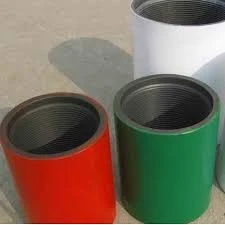- Afrikaans
- Albanian
- Amharic
- Arabic
- Armenian
- Azerbaijani
- Basque
- Belarusian
- Bengali
- Bosnian
- Bulgarian
- Catalan
- Cebuano
- Corsican
- Croatian
- Czech
- Danish
- Dutch
- English
- Esperanto
- Estonian
- Finnish
- French
- Frisian
- Galician
- Georgian
- German
- Greek
- Gujarati
- Haitian Creole
- hausa
- hawaiian
- Hebrew
- Hindi
- Miao
- Hungarian
- Icelandic
- igbo
- Indonesian
- irish
- Italian
- Japanese
- Javanese
- Kannada
- kazakh
- Khmer
- Rwandese
- Korean
- Kurdish
- Kyrgyz
- Lao
- Latin
- Latvian
- Lithuanian
- Luxembourgish
- Macedonian
- Malgashi
- Malay
- Malayalam
- Maltese
- Maori
- Marathi
- Mongolian
- Myanmar
- Nepali
- Norwegian
- Norwegian
- Occitan
- Pashto
- Persian
- Polish
- Portuguese
- Punjabi
- Romanian
- Russian
- Samoan
- Scottish Gaelic
- Serbian
- Sesotho
- Shona
- Sindhi
- Sinhala
- Slovak
- Slovenian
- Somali
- Spanish
- Sundanese
- Swahili
- Swedish
- Tagalog
- Tajik
- Tamil
- Tatar
- Telugu
- Thai
- Turkish
- Turkmen
- Ukrainian
- Urdu
- Uighur
- Uzbek
- Vietnamese
- Welsh
- Bantu
- Yiddish
- Yoruba
- Zulu
well tubing and casing
Understanding Well Tubing and Casing Essential Components of Oil and Gas Extraction
In the oil and gas industry, well tubing and casing are fundamental components that ensure the efficient extraction of hydrocarbons from underground reservoirs. These two elements play critical roles in the integrity, safety, and productivity of oil and gas wells. Understanding the differences between tubing and casing, as well as their respective functions, is crucial for anyone involved in or studying the energy sector.
What is Well Casing?
Well casing refers to the series of pipes that are installed in the borehole after drilling is complete. The primary purpose of well casing is to stabilize the wellbore, prevent the collapse of surrounding geological formations, and isolate the well from other subsurface fluids. Casing is typically made from steel or a high-strength alloy, and its construction varies based on the specific conditions of the well, including depth, pressure, and temperature.
Casing comes in several layers, with each serving a specific function. The first layer, known as surface casing, is installed at shallow depths and serves to protect groundwater and provide structural integrity to the shallow part of the well. Following this, intermediate casing is installed to support the casing string and protect against high-pressure formations. Finally, production casing is set in the area where hydrocarbon production occurs, and it is designed to withstand the pressures and temperatures of the reservoir.
What is Well Tubing?
Once the casing is set and cemented in place, well tubing is inserted into the production casing. Tubing is a smaller-diameter pipe, made from specialized steel, that serves as the conduit through which oil or gas is brought to the surface. Unlike the casing, which is primarily concerned with maintaining the structural integrity of the well, tubing is designed specifically to optimize the flow of hydrocarbons.
well tubing and casing

Tubing is crucial for several reasons. It minimizes pressure losses during production, helps manage the flow rates of hydrocarbons, and allows for the injection of materials such as chemicals for enhanced oil recovery. Various factors, such as the type of reservoir, desired production rate, and specific well design, influence the selection of tubing size and material.
Differences Between Casing and Tubing
Understanding the differences between casing and tubing is essential for effective well design and operation. One of the primary distinctions is their function. Casing forms the structural foundation of the well, while tubing serves as a passage for fluid flow. Additionally, casing is generally larger and thicker than tubing, designed to withstand external pressures, whereas tubing is more focused on internal pressure management.
While casing is usually cemented in place, tubing can be removed and replaced as needed. This flexibility allows operators to adapt to changing conditions in the well and ensure optimal production levels. Both components must be designed and maintained carefully to avoid issues such as leaks, corrosion, or failure, which can lead to catastrophic events or significant economic losses.
Conclusion
In summary, well tubing and casing are integral components of oil and gas wells, each serving specific but complementary functions. Casing provides structural support and isolation for the well, while tubing facilitates the flow of hydrocarbons to the surface. A thorough understanding of these elements is essential for ensuring safe, efficient, and profitable operations in the oil and gas sector. As technology advances, so too will the materials and methods used in casing and tubing, potentially leading to even greater efficiencies in hydrocarbon extraction.
-
Tubing Pup Joints: Essential Components for Oil and Gas OperationsNewsJul.10,2025
-
Pup Joints: Essential Components for Reliable Drilling OperationsNewsJul.10,2025
-
Pipe Couplings: Connecting Your World EfficientlyNewsJul.10,2025
-
Mastering Oilfield Operations with Quality Tubing and CasingNewsJul.10,2025
-
High-Quality Casing Couplings for Every NeedNewsJul.10,2025
-
Boost Your Drilling Efficiency with Premium Crossover Tools & Seating NipplesNewsJul.10,2025







